Are you about to put acoustic guitar strings on an electric guitar? If yes, then it’s a good idea for you to know what might happen, and what sound you are going to get.
So, Can you use acoustic guitar strings on an electric guitar? Or Should you? Yes, you can. But I don’t recommend doing so. Using Acoustic guitar strings on an electric guitar will surely lead to an unbalanced sound, because acoustic guitar strings don’t have the same magnetic properties as electric guitar strings do, and those properties are crucial for making a proper sound.
Therefore, what you are going to get is a sound that you actually don’t want to hear, and maybe even waste your money on guitar strings that don’t do the work as you want them to. So, you should consider some things that are listed below, before putting acoustic guitar strings on an electric guitar.
Do Acoustic And Electric Guitars Use The Same Strings?
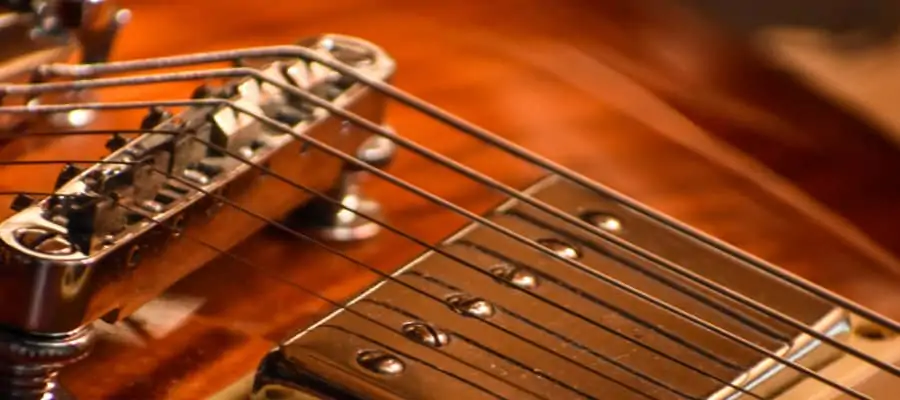
Acoustic and electric guitars don’t use the same strings. The differences between them are the number of string windings, string gauge size, and materials. The thing that is common to acoustic and electric guitar strings is the core which is made of steel. The reason why there are different types of guitar strings is in the different ways of producing sounds. Electric guitar generates the sound with electricity and acoustic guitar through vibration by strumming strings.
What Happens When You Put Acoustic Strings On An Electric Guitar?
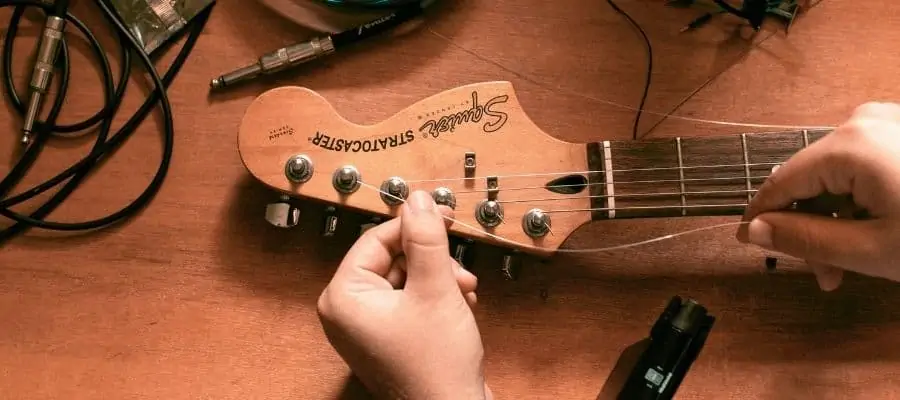
Putting acoustic strings on an electric guitar will affect your sound, that’s for sure. So, first of all, you will get a low mid-range tone. More tension on your guitar’s neck will be, so you might need to adjust the truss rod.
Besides that, acoustic strings have a heavier strings gauge. That will make your strings stiff and harder to bend. You will lose the proper resonance because of the difference in the acoustic and electric guitar string material.
Some players say it was harder to play, clarity was gone, and strings wouldn’t stay in tune for a long time, which is pretty inconvenient for everyone.
Will 80/20 bronze strings work on an electric guitar?

Many of the acoustic guitar strings brands use a material called 80/20 bronze. It is actually the same as brass. Brass is made from 80% copper and 20% zinc, and that actually covers the “80/20” of the term. This material gives the strings a cutting and clear sound.
The heart of an electric guitar is the pickup. Strings’ vibration is transformed into electric currents by it. It is possible if strings have a plating of a magnetically active metal, such as nickel or steel. Pickups work on a magnetic output, so they use magnetism to create the signal for the amplifier. As the string vibrates, it causes fluctuations in the magnetic field, and it induces the fluctuating current in the pickup coil.
80/20 bronze strings are for enhancing the sound of acoustic guitars, and the material of these strings is not magnetically active. So, the conclusion is that the 80/20 bronze strings will work on an electric guitar, but not in the perfect way. You definitely won’t get the sound you want.
Will phosphor bronze strings work on an electric guitar?

Both brass and bronze strings are designed to enhance the sound of acoustic guitars. Technically, phosphor bronze strings are made of bronze material, but there is also a phosphor addition to make them sound more mellow and warmer.
Like the 80/20 bronze strings, phosphor bronze strings don’t have magnetically active components, except for the steel core. The pickups won’t read them very well. The signal will be weak and muddy. You will be disappointed, and you will waste a fine set of new “phosphors”.
The answer is yes; phosphor bronze strings will work on an electric guitar, but not in the way you want them to work.
What Adjustments Do You Need To Make On Your Electric Guitar After Putting Acoustic Guitar Strings?
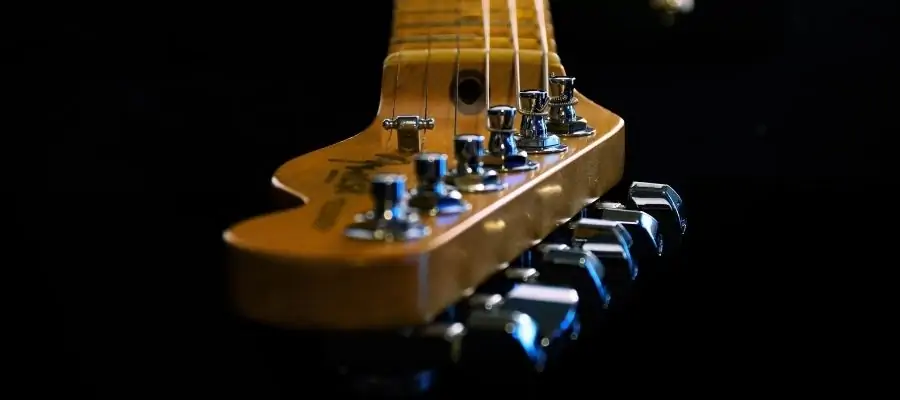
There are many reasons why people might want to use acoustic guitar strings on an electric guitar. Maybe they want the electric guitar to sound like an acoustic one, or they just love experimenting.
The solution is the proper setup that involves multiple services such as adjusting the neck and raising or lowering the string height.
First of all, we will talk about the string gauge size. It has to be close to the standard electric string tension, so you won’t have to do so many setup changes. The heavier the gauge of string, the more tension.
Why is that important? Well, an electric guitar string has approximately 36% less tension than a standard acoustic guitar string. So, in order to have the same sound as possible, you should pick the lighter string gauge size. For example,11s are going to feel heavier, or stiffer than 10s. 9s are going to feel very light and bendable compared to the standard 10s.
String up your guitar and bring the strings to pitch, watching the guitar nut and bridge saddle very carefully and closely. That is very important because you have to be sure that there isn’t any binding that will cause any of the trouble.
After that, please check the neck relief. In order to correct for different tension, you’ll probably have to make a truss rod adjustment. But if you make sure the acoustic guitar strings have a lighter gauge size, it will be easier, because of the reasons named above. Play every note on the fretboard. Also, make sure that notes don’t have excessive fret buzz.
Do Electric Guitars Need Metal Strings To Work Properly?
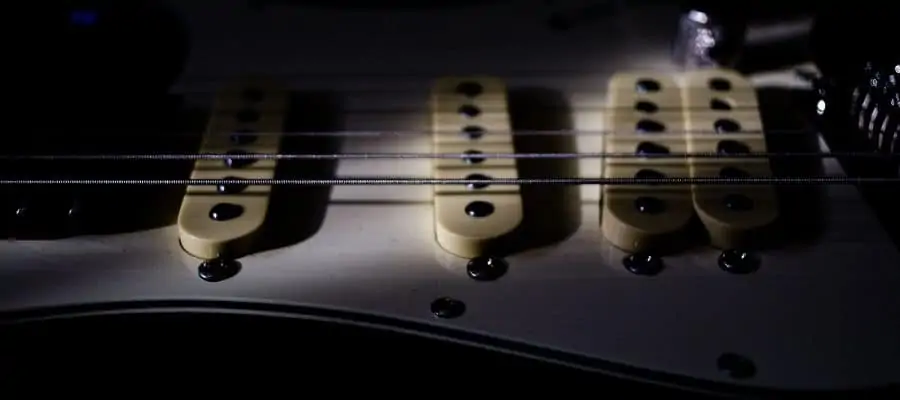
As I mentioned before, the structure of any steel guitar string is the core made of steel, which is the common thing for acoustic and electric guitar strings, and plating metal. So, guitar strings are made of metal, both electric guitar strings and acoustic guitar strings.
And yes, we can say that the electric guitars need metal strings to work adequately, but not any of the metal strings. The plating metal must be magnetically active. Precisely, it has to be made of metals such as steel or nickel so the sound wouldn’t be weak and muddy.
Those guitar strings that have the previously mentioned plating metals in their structure are called electric guitar strings. Guitar strings’ plating metal, such as brass and phosphor bronze, is strictly connected to the structure of the standard acoustic guitar strings.
What Is The Difference Between Acoustic And Electric Guitar Strings?
The very important thing is choosing the right type of guitar strings. There are some key differences between acoustic and electric guitar strings. That includes the number of wound strings, winding/plating materials, and a guitar string gauge size. These differences are designed to bring out the instrument’s best.
Number Of Wound Strings

The obvious difference between acoustic and electric guitar strings is the number of wound strings. Set of the acoustic guitar strings usually includes two unwound, and four wound strings.
The set of the electric guitar strings most of the time includes three wound strings, but sometimes you can find four wound strings in a set of the electric guitar strings from some of the manufacturers. This last-mentioned set is for those who imagine being on a stage with Louis Armstrong while playing jazz music.
Winding Material
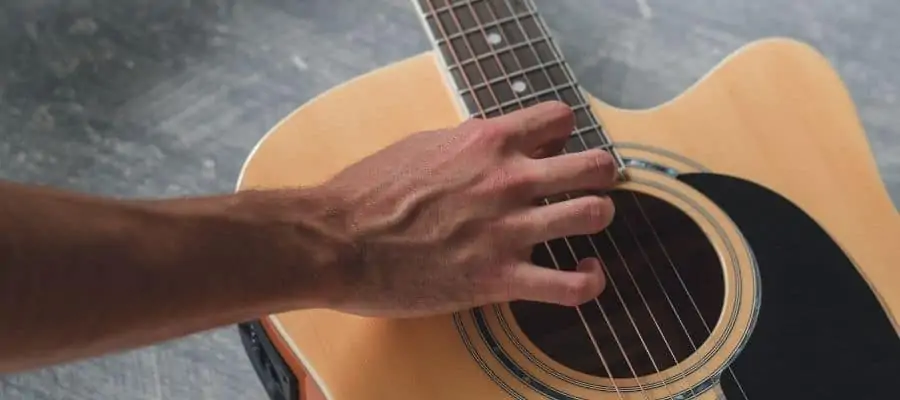
A winding material is the most important distinction between acoustic and electric guitar strings, the materials used for winding around the core are made of steel. A winding material is actually a metal. The acoustic guitar strings’ winding (plating) metal is brass or bronze, actually non-magnetically active metals.
These guitar strings are darker in appearance, more of a copper/gold color. The electric guitar strings’ winding metal is steel or nickel, for example. These metals are magnetically active, which is connected to the way the electric guitar works. In appearance, they are brighter and lighter than acoustic guitar strings.
String Gauge Size

A string gauge size is how thick the string is. The thicker a string is, the warmer its response will be, and the more volume it will produce. They are also stiffer. Thinner strings are brighter and easier to play. Different types of guitar utilize different string gauges.
Electric guitars prefer lighter guitar string gauge size, while acoustic ones prefer heavier guitar string gauge size. You can find the information about the guitar string gauge size by reading the numbers on the package.
Most of the electric guitars are equipped with 9-gauge strings, and the acoustic guitars are equipped with 12-gauge strings.
On average, acoustic guitar strings are about 21.2% thicker than electric guitar strings. Acoustic guitar strings also generate 54.8% more pressure than electric guitar strings on average. When comparing string gauges, you often hear labels such as extra light, light, and medium. Light strings on an electric guitar will have smaller gauges than light strings on an acoustic guitar, and light strings for either can vary greatly between one manufacturer and another.
How Do Acoustic Guitar Strings Sound On An Electric Guitar?

I’ve mentioned that both acoustic and electric guitar strings have a steel core (excluding the nylon strings). Steel has magnetic properties. Around the core, guitar strings have the winding, magnetically active metal in electric guitar strings, and non-magnetically-active in acoustic guitar strings.
Electric guitar strings with their properties are compatible with the mechanism of producing the sound when it comes to the electric guitars. The reason why electric guitar strings are ideal for an electric guitar is the winding magnetically-active metal.
But, acoustic guitar strings can also produce a sound if you put them on an electric guitar. The reason hides in the fact that the steel core has magnetic properties and can interact with pickups. But, the level of the cores’ magnetic properties isn’t high enough to satisfy the needs of the electric guitar. Because of that, the sound is muddy, weak, and unbalanced. The sound hasn’t got the fullness and brightness that we look for in a regular set of electric guitar strings.
Can I Use An Acoustic High E String On An Electric Guitar?
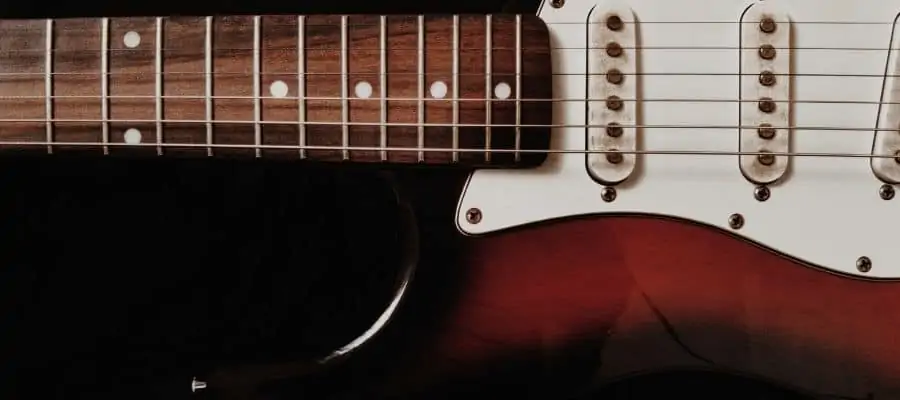
Most of the acoustic guitars have the first and second strings (high E and B strings) that are unwound. But many electric guitars have the first three strings that are unwound.
Steel is magnetically reactive, so the high E and B acoustic strings will likely sound fine. The other four strings, since they have a bronze coating, aren’t as magnetically reactive, and therefore will generate a lower signal, creating an unbalanced sound.
Is It Okay To Put Electric Guitar Strings On An Acoustic Guitar?
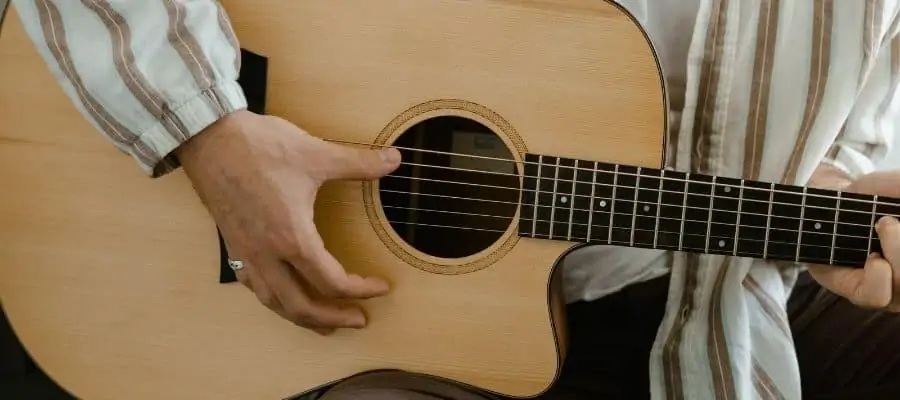
Some people want the acoustic guitar to sound like an electric one, some of them say that is easier and less painful to play the guitar with the electric guitar strings, or they just love experimenting.
Let’s talk about something that has to be on your mind before putting electric guitar strings on an acoustic guitar. We know that the electric guitar string has approximately 36% less tension than a standard acoustic guitar string.
So, in order to have the same sound as possible, you should pick the heavier string gauge size. Set up your guitar, and the more similar the electric guitar string gauge size to the acoustic guitar string gauge, the better. Check the neck relief. Play every note.
You can break the guitar nut by shoving too large a string into a too-small nut slot. But, can too small of strings damage a guitar? No, not in a short term. Prolonged use of too small strings will start to create grooves in the nut slots, and also on the bridge saddle.
These new grooves aren’t dangerous in themselves, although you may get some strange buzzing and intonation issues. But when going back to the correct gauge, it’ll be like a too big string in a too-small slot and you’ll run the risk of splitting the nut or chipping the saddle.
So, it is possible and it is okay to put the electric guitar strings on an acoustic guitar, but just for a short time. If it’s a temporary fix in an emergency, there will be no damage by putting electric strings on an acoustic guitar.
Conclusion
The electric guitar does not use the same strings like an acoustic guitar. The key differences between them are the material they’re made of, the guitar string gauge size, and the number of wound strings.
Acoustic guitar strings work on an electric guitar, but I don’t recommend doing so. When you put acoustic strings on an electric guitar, you will get an unbalanced and weak sound, because the material the acoustic guitar strings are made of, can’t send the proper “signal” to the guitar pickup.
If you are in an emergency, you can put the acoustic guitar string on an electric guitar, but you have to set up your guitar. Also, you can put the electric guitar strings on an acoustic guitar, but don’t keep them on your guitar for a long time, because it can cause guitar damage, especially because of the differences in the string gauge size, actually in guitar strings tension.
Strings are a tricky and often-debated subject. It is good to know the differences between guitar strings because the differences are designed to bring out the instrument’s best.
If you found this article useful you may want to save this pin below to your Guitar board

Recent Posts
Some guitarists insist on buying an expensive amplifier with their electric guitar. They assume that this is a must for every type of guitarist out there. However, in some situations, this isn’t...
Top 50 Free Realistic Guitar VST Plugins With Sound Examples
As technology has rapidly advanced in the recent decade, computers are stealing more and more roles from physical musical instruments and accessories. Nowadays, you do not need expensive amps,...

